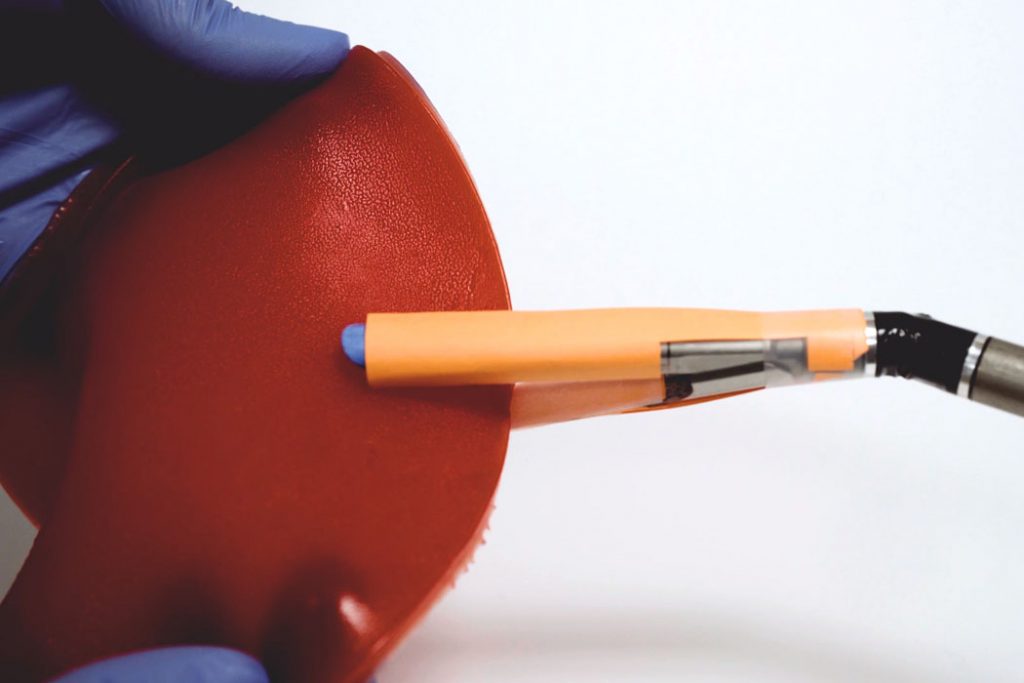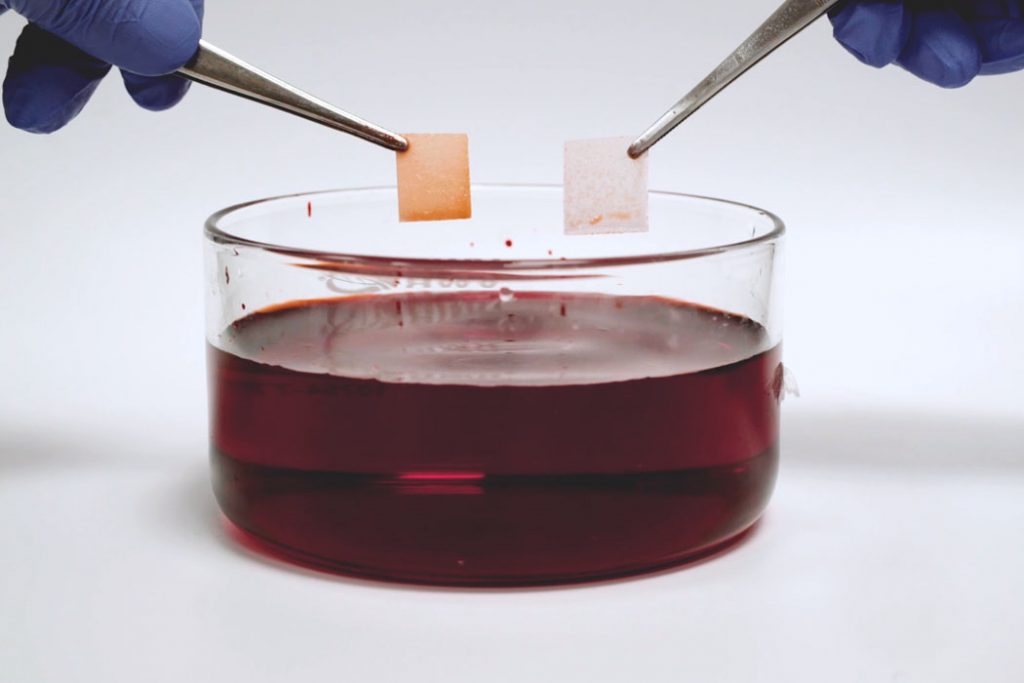The patch resembles a foldable, paper-like film when dry. Once it makes contact with wet tissues or organs, it transforms into a stretchy gel, similar to a contact lens, and can stick to an injured site.

In contrast to existing surgical adhesives, the team’s new tape is designed to resist contamination when exposed to bacteria and bodily fluids. Over time, the patch can safely biodegrade away.

The patch manages to meet these requirements as it’s formed in a three-layered manner. The middle layer is the main bioadhesive that turns the patch into a pliable and stretchable surface once in contact with a wet surface. This layer is sandwiched between two other ones, one is coated in silicone oil to prevent the patch from sticking to anything on its way to the site, and the other is a film that works against bacteria and other contaminants.
The researchers are working with clinicians and surgeons to optimize the design for surgical use, and they envision that the new bioadhesive could be delivered via minimally invasive surgical tools, operated by a surgeon either directly or remotely via a medical robot.
According to Massachusetts Institute of Technology News














